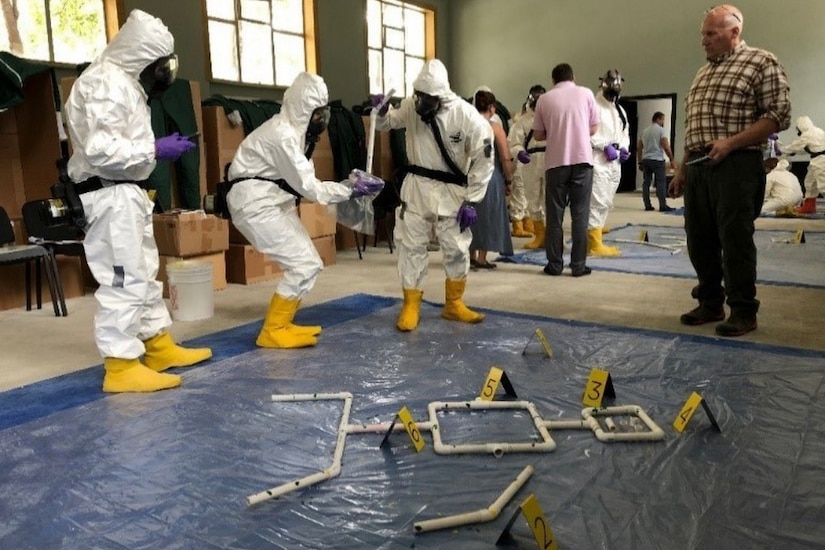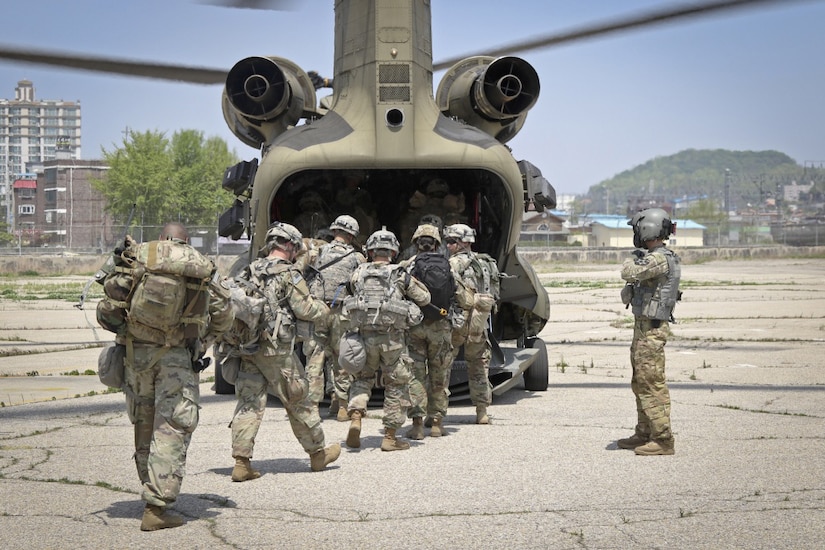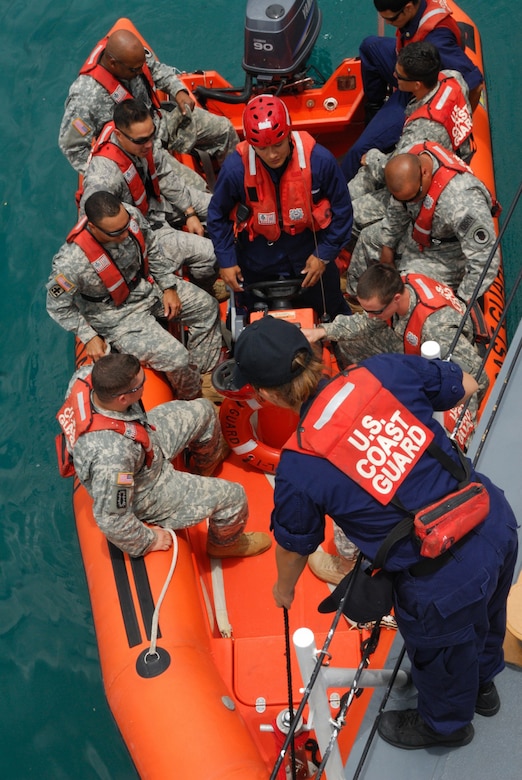May 5, 2021 | , DOD News

Testifying before the HASC's subcommittee on intelligence and special operations were: Jennifer C. Walsh, who is performing the duties of undersecretary of defense for policy; Brandi C. Vann, acting assistant secretary of defense for nuclear, chemical and biological defense programs; Navy Vice Adm. Timothy G. Szymanski, deputy commander of U.S. Special Operations Command; and Rhys M. Williams, acting director of the Defense Threat Reduction Agency. The hearing addressed DOD's fiscal year 2022 budget request for counter-WMD, or CWMD, strategies, policies, priorities, programs and state of readiness.
"[DOD] continues to improve its ability to dissuade, deter and defeat these threats while maintaining the ability to respond to and mitigate the effects of WMD use," Walsh emphasized. "We are taking action to meet WMD challenges, and, as the nature of WMD threats is evolving, we know we have more work to do."
DOD has three lines of effort to organize its WMD work to counter such threats: prevent acquisition, contain and reduce threats, and respond to crises, she added.
"As the department increases its focus on competition among great powers, developing the capabilities necessary for us to fight and win in a cyber-contested environment in those theaters becomes critical," Walsh said.
"As administration officials direct and develop new national and departmental strategy reviews and guidance documents, DOD's CWMD stakeholders will be focused on addressing the dynamic CWMD threat and ensuring that it gets space in [strategy reviews and guidance documents], including posturing the department to mitigate biological threats more effectively and improving readiness for … challenges in Europe and Asia," she said.

Vann said the Nuclear Chemical and Biological Defense office, including the Defense Threat Reduction Agency, is responsible for ensuring the department maintains the capability and readiness to counter WMD across the threat landscape. She also said NCD is aligning to meet the direction given by the president's interim national security, strategic guidance, and the secretary's priorities. "Our efforts will enable us to close today's gaps rapidly, mitigate vulnerabilities, anticipate emerging threats, and strengthen our domestic and international partnerships," she said.
But the pace of technology continues to move faster and faster, Vann pointed out.
"As a result, the players on the world stage are shifting; the conflict landscape is changing and so are the hazards that we all face — making our jobs ever more complex," she told subcommittee members. "Overcoming these changes and the emergence and reemergence of unique [chemical, biological, radiological and nuclear] threats requires the department to first understand the emerging threats landscape and then develop adaptive capabilities to respond to these threats as they arise. In doing so, we can ensure that the joint force can fight and win in CBRN-contested environments, prepare for surprises from emerging threats, and reduce the risks that they pose."
Vann discussed modernizing the force, and she said fields such as artificial intelligence, machine learning, additive manufacturing and rapid medical countermeasure development provide an opportunity to adapt DOD's defense capabilities quickly and effectively. "We should embrace the technological revolution within the private sector and lead game-changing technology advancements to ensure our warfighters are best prepared for the future threat," she added.
"We will continue to remain behind the warfighter and ahead of the threat to ensure joint forces' ability to survive, operate and regenerate combat power in the future," Vann said.

"Clearly, WMD are complex transregional challenges that demand the application of specialized expertise and authorities across our government, as well as our foreign allies and partners," Szymanski testified. "The Department of Defense plays a unique and critical supporting role to our interagency colleagues, especially at the departments of Energy, State, Treasury and Commerce [and] our law enforcement entities to prevent and contain WMD threats, even as we prepare to respond to WMD crises."
The vice admiral said U.S. Special Operations strives to improve its methodology and ensure it provides timely, reliable, relevant and actionable information to support senior department decision-making. "Our aim is to better support senior leaders charged with employing our joint force today, developing and preparing for tomorrow and helping to design a military that is ready to fight and win against both current and future web threats," Szymanski said.
"There are few greater challenges to U.S. national security than those posed by WMD in emerging threats," Williams said. "As the globalized threat landscape evolves, DTRA's uniquely skilled workforce and robust, collaborative network of partners are ready to evolve with it, continuing to safeguard the lives and interests of the United States and our allies abroad."







No comments:
Post a Comment